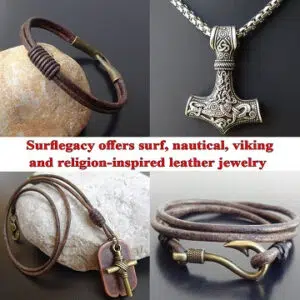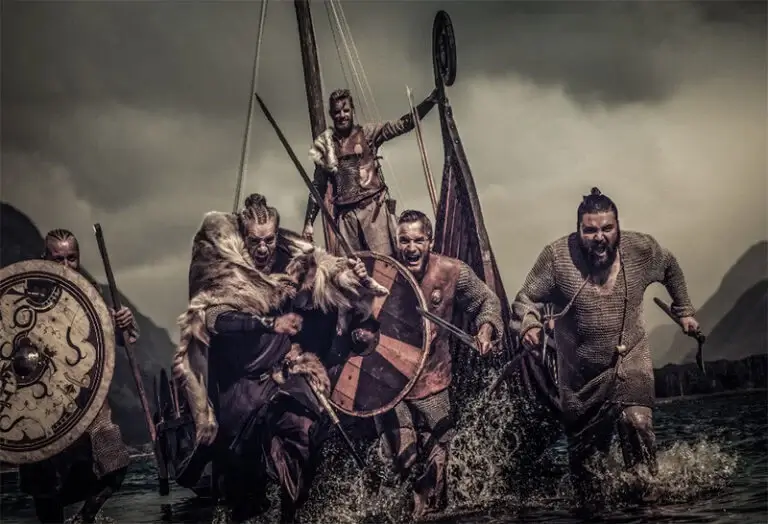In this blog post, we’ll be exploring the topic of whether or not there were black Vikings. We’ll be looking at the history and evidence to see if there’s any truth to this claim.
The Vikings were a group of people who lived in Scandinavia from the 8th to the 11th centuries. They were known for their skill in sailing and trading, as well as for their violent raids on other countries; many of them were also excellent warriors. The Vikings were a very diverse group of people, and their appearance varied depending on where they lived. In general, the Vikings were light-haired and fair-skinned, but there were also some Vikings with darker hair and complexion.
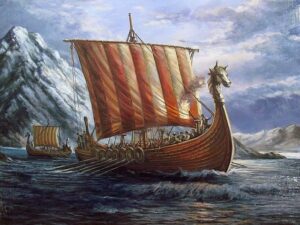
Viking Drakkar
What Is The Evidence For Black Vikings?
Images of Vikings in popular culture with blue eyes, blond hair, and horn helmets are more about entertainment than historical accuracy. However, historical evidence shows that brown-skinned people were a part of Viking culture.
For people interested in the real story of the Vikings, historical accuracy is important. Gwyn Jones offers evidence in his book a History of the Vikings that there were people with different racial profiles among Scandinavian people and he argues that the myth of a completely white race of people is factually false, and that there were minority races who had brown skin tones as well.
Harald Fairhair was Norway’s first king; his father was Halfdan the Black (svarti), and two of his sons were also Halfdan, one named the White (hviti) and the other, interestingly, the Black.
Some historians, such as Jones, believe the nickname “the Black” refers to his hair color. While this is somewhat correct, the consequences also apply to those with dark skin.
If the description only included hair color, it may raise doubts regarding the other son named “the White.”
Jones gives another example in Egill’s Saga, sometimes known as Egil’s Saga, an Icelandic saga about the life of Egill Skallagrmsson’s clan. The narrative takes place between the years 850 and 1000 and follows Egill’s grandpa through his descendants.
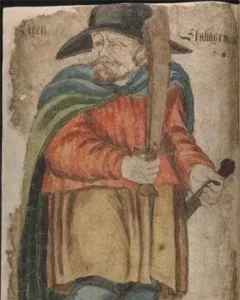
A depiction of Egill Skallagrímsson in a 17th-century manuscript of Egils Saga
At one point there is the description of two Vikings: “Thorolf was tall and gorgeous like his mother’s people, but Grim was dark and hideous like his father. Grim’s sons, Thorolf and Egill, born in Iceland, continued the pattern: Thorolf was tall, beautiful, and sunny-natured, like his uncle; Egill was dark, even uglier than his father, sinuous and incalculable
he uses the word swarthy, on page 100 we find:
“Egil had dark eyes and was swarthy”
While such descriptions may insult modern readers, Jones points out that these nicknames “were merely descriptive, like the Short, Tall, Fat, Slender, Bald, or Hairy-beaked” and had no negative purpose in their day.
Egil was not a blonde-haired with blue-eyes, attractive Viking, as this able word image shows; rather, he resembled a more taciturn, threatening troll than a man.
What Does History Say?
Hjør og Ljufvina was the last king of Avaldsnes, and his wife Ljufvina was a princess of Mongolian descent. His wife, Ljufvina, was a princess of Mongolian heritage who reigned over the Norsemen at Karmsundet despite her dark color and strange appearance.
They had two sons, Hamund and Geirmund, and because both had dark skin they were nicknamed Heljarskinn; the “Black-Skinned”. Geirmund the Black-Skinned – the black Viking – never ascended to the throne of Avaldsnes. However, he is depicted in historical documents as a sea-king who became an ally of the Dublin kings before crossing the water to Iceland and became known as “the greatest of all immigrants in Iceland.”
What Does The Dna Research Say?
According to Erin Blakemore of National Geographic, a multinational team of researchers used bones recovered at more than 80 sites spanning Across Europe and Greenland to analyze the genomes of 442 individuals buried between around 2400 B.C. and 1600 A.D.

Dna testing on skeletons found on archaeological sites
The results were published in Sep. 2020 in an article on Science Journal Nature, so this kind of new information is very recent.
The DNA testing also pointed out that some individuals had both Sami (a group of reindeer herders with Asiatic roots) and European heritage. If you want to know more have a look at our article “What did Vikings look like”
The conclusion is that although DNA analysis from graves and archeological finds has revealed that Vikings were more ethnically diverse than previously thought, the vast majority of them remained from Northern Europe
However, the DNA research analyzed only a very small portion of the Viking population of that time, so we have to take into account a few factors:
- Vikings went all over the world, including the European continent, North America (see our post “Did the Vikings discover America?) Russia, and North Africa, and it is possible that black-skinned peoples joined them on their trips and were absorbed (by force or otherwise) into their culture.
- People with dark skin may have arrived in Scandinavia, from the African continent, in various ways, the most common being as willing travelers or as slaves.
- Black people may have traveled to Scandinavia during the Viking age to find fertile land, meaty game, and valuable goods.
- The Vikings took slaves from other places in Europe and forced them to work for them, including people with black skin
- Slave trade during the Viking age was brutal and ruthless, and it faded only with the arrival of Christianity.
Was Jarl Haakon As Portraied In Vikings: Valhalla, Really Black?
Vikings: Valhalla follows a new group of characters, among them Jarl Haakon, the current ruler of Kattegat. But was she a real person? Was she really a Black Viking ruler?
Short answer: She is not, she is just a purely fictional character.
Long answer: To begin with, It’s worth noting that the genuine Haakon Sigurdsson was a white man, but the Haakon in Vikings: Valhalla is a black woman. The actual Haakon Sigurdsson was a strong earl and pagan leader who ruled Norway de facto from 975 to 995. He was known as “Hakon the Mighty.” In Vikings: Valhalla, however, Haakon is the monarch of the imaginary kingdom of Kattegat.
Why is Estrid Haakon Black In Vikings: Valhalla?
She is black, according to the Netflix series, because her Viking grandfather fell in love with her African grandmother, who was of royal blood. They finally returned to Kattegat to establish Haakon’s dark-skinned lineage. This is a fictional fascinating piece of history that adds dimension to her character.
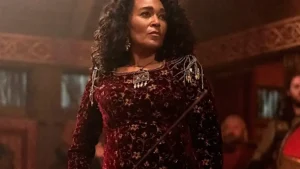
Conclusion
The available evidence does suggest that there were some Vikings with dark skin color, though the numbers were probably very small. Given the limited sources, it is difficult to say definitively how many there were or what their exact role within Viking society was. However, the fact that they existed at all is once again a fascinating glimpse into the multicultural Viking world.
Shop Viking Jewelry
Are passionate about Vikings or Old Norse mythology? Finding the ideal piece of Viking Jewelry can be challenging, especially if you lack inspiration or don’t know where to look. Surflegacy, on the other hand, has you covered. We have a wide range of Viking Jewelry in various styles, shapes, colors, and materials, to accentuate your Viking spirit and look. Visit our shop here
